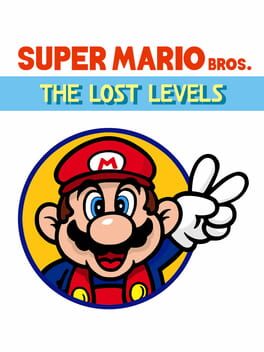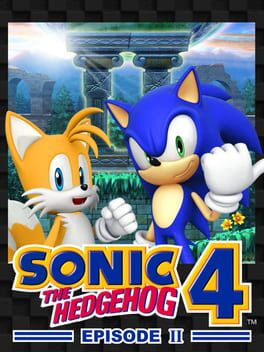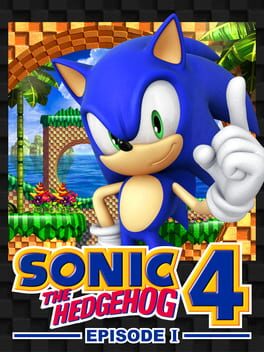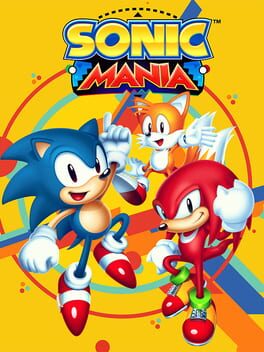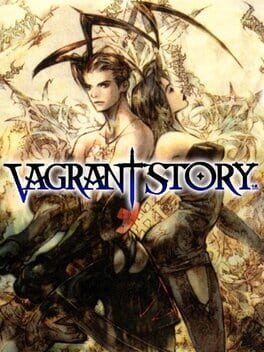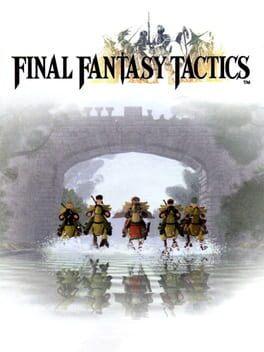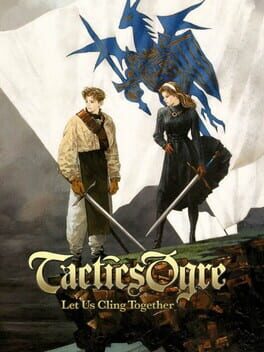Nohar
20 reviews liked by Nohar
Persona 3 FES
2007
Would've been an 8 were it not for Tartarus. There's also some pacing issues in the story which are commonplace with these sorts of games, there are many scenes which reiterate the game for example, but I like to think these are eased somewhat by the game's character writing and the exploration of its themes.
Did you know that scientists have invented a cure for insomnia? Yeah, it's really simple too. All you have to do is boot up this game, play it for 10 minutes, get bored of it, and you'll be sleeping like a baby!
Only problem is the method only works once most of the time because most people never want to play it ever again.
Only problem is the method only works once most of the time because most people never want to play it ever again.
In some ways, I can certainly commend Dimps for attempting to greatly improve elements that were sorely lacking in episode 1: the lackluster, cheap looking environments are now replaced with really quite good 2.5D backgrounds and environmental details. The bizarrely animated and somewhat deepfried Sonic model of the first game is vastly improved as well, and there's a lot more polish to his animations and expressions on top of it. The stage themes are more original, the music soundfont is improved (...somewhat, Oil Desert 2 still exists), the special stages are better, Sonic even feels less stiff to control. By all accounts this should've been a marked improvement over the first episode, but unfortunately a lot of elements still aren't where they need to be, and in fact, some elements ended up being DOWNGRADED for some baffling reason. The level design is a lot more automated and homogenous than Episode 1, wheras that game had some issues with placing springs and boosters everywhere, it at least allowed for some semblance of decent design here and there. In Episode 2, the boosters and springs are even more prominent than ever before, and any semblance of original level design is replaced with homing attack chains and the game browbeating you into using the newest gimmick: the Tails Combos. Basically you press a button to combo with Tails, use it in the air and Tails flies you up, use it on the ground and you both spindash together at ridiculous speeds plowing through everything (you'll be using this basically a majority of the game). The rolling attack is so fundamentally broken that it essentially trivializes 90% of the game's design, and it ends up being very mindless. But if that weren't enough, without the Tails combos, the lackluster physics are laid bare plain to see this time. In the first game at the very least you could get a dopamine rush by spamming the broken airdash to gain a ridiculous amount of speed, but here that option is considerably nerfed due to the game wanting you to use the funny 69 rolling attack in order to gain speed. In general, this game has almost no sense of flow whatsoever; whenever the game wants you to use the Tails combos, the game freezes for a second as Sonic and Tails need to high five, do a little pose, and THEN initiate the combo. Because it happens so frequently the pace gets halted and restarted so many times it'll make your head spin. And dear god, the bosses in this game are abysmal. The bosses in Episode 1 weren't anything to write home about but the bosses here take so unnecessarily LONG, and there's so many periods where you can't even interact with the boss at all, just sit there and watch it do goofy nonsensical things until it finally becomes vulnerable again.
Despite being slightly lesser than Episode 1 in certain key areas, this game is still just ok at best, mediocre at worst. Both episode 1 and 2 are experiences that go in one ear and out the other. Like the old saying goes, you can do better, but you can also do worse.
Despite being slightly lesser than Episode 1 in certain key areas, this game is still just ok at best, mediocre at worst. Both episode 1 and 2 are experiences that go in one ear and out the other. Like the old saying goes, you can do better, but you can also do worse.
Sonic Mania
2017
I've already penned plenty of my thoughts on both Sonic 3 and Sonic & Knuckles previously so I don't have a whole lot to add, but this game really contains the best of both worlds. Building on S&K's exploration of Sonic and Knuckles' different strengths and movesets to create different paths through each stage, this game lets you play as Sonic, Knuckles, or Tails, each with their own movesets and optimal routes. The game has stages from both Sonic 3 and S&K resulting in a game that is much meatier in scale than any of its predecessors, and reuses the save system from Sonic 3 to ensure you can enjoy the game in bite-sized chunks without getting burnt out. Minor gripe: they did Tails dirty in this, giving him the cheapest boss fight (Marble Garden Act 2), and not giving him a Hyper form.
Anyways, this is the pinnacle of 2D Sonic, a fitting synthesis and improvement of everything that came before it. Surely the series would move onto bigger and better things, right? Right??
"It's quiet. Kimahri go now."
Anyways, this is the pinnacle of 2D Sonic, a fitting synthesis and improvement of everything that came before it. Surely the series would move onto bigger and better things, right? Right??
"It's quiet. Kimahri go now."
Vagrant Story
2000
Squaresoft and Yasumi Matsuno's second collaboration spawned the painstakingly crafted Vagrant Story, a hyper-intricate and hyper-mystifying gem, perhaps the culmination of the former's acrobatic presentation and the latter's disquieting writing. Alongside the visuals, what immediately stands out are the main cutscenes: A minimal and reckless form of storytelling, packed with refined - almost cryptic language and portrait-worthy shots in which characters enter, ponder and exit with (seemingly) little to no regard for identity nor coherence, only to slowly decode a tragic plot and cast as it proceeds. The best moments - in particular, emit an immersive yet disorienting atmosphere that reminds one of the more abstract, ghostly experiences of Xenogears' second disc, while others are boss fight intros rendered in creative and dramatic ways. Its structure, both narratively and functionally, had little in common with JRPGs; largely indifferent to the hero's journey and to the village-to-dungeon format (basically a gradually-unraveling dungeon-crawler that disposed of the hub, shops, friendly NPCs, currency, etc.), which becomes an attraction in itself.
Equally original is the gameplay, ostensibly a mix of action-adventure, platforming and ARPG whose combat combines free movement with menu-selection pauses (reminiscent of Parasite Eve minus the ATB gauge) and damage-able limbs a la Front Mission. But in reality, it's the systems that tower over the rest; dense and overwhelming in a vein similar to Ogre Battle (another Matsuno-led project). The most striking aspect is probably how one's equipment factors into hit/damage calculations, utilizing not one but three sets of resistances + weaknesses (affinity, class and type, i.e. elements, species and weapon blades, respectively), and partly governed by mutating stat levels (e.g. Fire, Undead, Piercing) tied to both gear and enemies. At the same time, mechanics such as Break Arts (weapon-exclusive supers unlocked via use-based mastery), Chain Abilities (that evolves SMRPG via quasi-unlimited, unlockable offensive/defensive follow-ups), and especially the aptly-named RISK (a secondary meter that trades accuracy and defense for crit-rate and healing power as chains accumulate) add even more rules and layers to this peculiar brand of strategic-action. This game's most trivial system would be a main feature on other RPGs.
Other - but no less vital mechanics complement the more distinguished ones, ranging from crafting, weapon mods, equipment tiers, durability, proficiency, etc. Altogether, these ideas form a convoluted web of interactions that turns each encounter into a flexible customization challenge, where bosses can either last for 20 minutes or fall to a single chain combo. Not even its many drawbacks (the overdemanding and sometimes hopeless early-game situations, the constant menu setup and the input-bloat) could spoil this multifaceted type-matching approach. By the end, the player has gathered and honed a virtual toolbox of equipment, magic and augments to construct specialized builds for any battle scenario.
A veritable alien JRPG encyclopedia, elegant and puzzling, theatrical but never awkward nor melodramatic, complicated yet intriguing, Vagrant Story absorbs and weaves together concepts from all sorts of past games without belonging to any of them.
Equally original is the gameplay, ostensibly a mix of action-adventure, platforming and ARPG whose combat combines free movement with menu-selection pauses (reminiscent of Parasite Eve minus the ATB gauge) and damage-able limbs a la Front Mission. But in reality, it's the systems that tower over the rest; dense and overwhelming in a vein similar to Ogre Battle (another Matsuno-led project). The most striking aspect is probably how one's equipment factors into hit/damage calculations, utilizing not one but three sets of resistances + weaknesses (affinity, class and type, i.e. elements, species and weapon blades, respectively), and partly governed by mutating stat levels (e.g. Fire, Undead, Piercing) tied to both gear and enemies. At the same time, mechanics such as Break Arts (weapon-exclusive supers unlocked via use-based mastery), Chain Abilities (that evolves SMRPG via quasi-unlimited, unlockable offensive/defensive follow-ups), and especially the aptly-named RISK (a secondary meter that trades accuracy and defense for crit-rate and healing power as chains accumulate) add even more rules and layers to this peculiar brand of strategic-action. This game's most trivial system would be a main feature on other RPGs.
Other - but no less vital mechanics complement the more distinguished ones, ranging from crafting, weapon mods, equipment tiers, durability, proficiency, etc. Altogether, these ideas form a convoluted web of interactions that turns each encounter into a flexible customization challenge, where bosses can either last for 20 minutes or fall to a single chain combo. Not even its many drawbacks (the overdemanding and sometimes hopeless early-game situations, the constant menu setup and the input-bloat) could spoil this multifaceted type-matching approach. By the end, the player has gathered and honed a virtual toolbox of equipment, magic and augments to construct specialized builds for any battle scenario.
A veritable alien JRPG encyclopedia, elegant and puzzling, theatrical but never awkward nor melodramatic, complicated yet intriguing, Vagrant Story absorbs and weaves together concepts from all sorts of past games without belonging to any of them.
